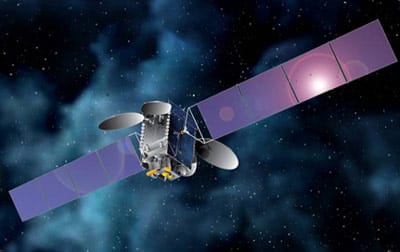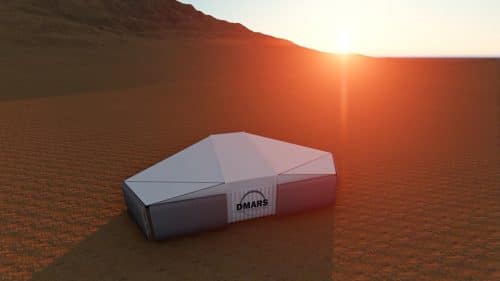The Amos-7 satellite of Space-Communications, operator of Amos satellites, will provide satellite communication services in an experiment that will take place as part of the project to establish a simulation training station under the conditions of the planet Mars of the D-MARS company.

The D-MARS station that will be established next month in the Ramon Crater will simulate the conditions of a Mars exploration mission in order to better understand the astronauts' experiences and find solutions to the challenges that may arise during extremely distant space missions. The station will be located in the south of the country near the Ramon Crater, and is intended to promote space exploration, science and technology in Israel by creating an infrastructure for academia, research and technological development.
As part of the experiment, communication will be made between the astronauts training at the site that simulates the conditions on Mars near the Ramon Crater, to a control and control center located at another site. This mission, which will be carried out in collaboration with the Austrian Space Forum (OeWF), is designed to examine issues in long-range interstellar communication as well as examine the challenges arising from manned space missions.
The training station will provide a unique space for space exploration due to its similarity to the natural environment of Mars in terms of geology, aridity and isolation. The missions on the station will simulate missions to Mars or other planets. The astronauts-in-training, who have been called "ranauts", will live as real astronauts with daily routines, food and communication as would be expected during real interstellar missions, including wearing a spacesuit when going outside the physical living space.

Dr. Hillel Rubinstein, director of the D-MARS project, said: "The D-MARS project places Israel at the forefront of space exploration, especially Mars. With the Amos-7 satellite we are adding a feature of interstellar communication to our experiments while highlighting the various challenges that astronauts in training may face. This task is done in cooperation with the Austrian Space Forum, which will conduct a parallel experiment together with the D-MARS station."
David Polak, CEO of Space-Communications, said: "We are excited and welcome the opportunity to take part in the D-MARS project. As we look to the future, it is our duty to nurture the next generation of space exploration experts. Amos-7 will play an important role in advancing researchers' knowledge of space-based communication."
See more on the subject on the science website:
